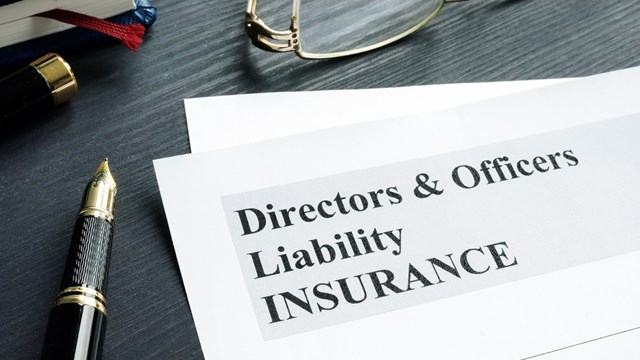
In order to understand circumstances in which you might not be covered by your D&O policy, you must first ask the question, “Where does a community association’s D&O policy fall within the entire insurance puzzle?” Second, “Are all D&O policies created equal?” And third, “How does the community association maximize its coverage?”
Board members ask these questions is because they want to know if their policy covers them for the work they do for the community association. For example, they want to know if they will be covered for the following possible situations:
• If a vendor sues the board and association for breach of contract;
• If a unit owner’s sub-tenant sues the board for wrongful eviction;
• If the association’s doorman sues for wrongful termination;
• If an outgoing board president sues to challenge the validity of an election;
• If a unit owner sues to challenge an assessment;
• If a unit owner sues to prevent the removal of trees in common areas;
• If the property manager is sued for an alleged unauthorized entry into an owner’s unit.
From an underwriter’s point of view, there are two motivations when producing an insurance product: write as many policies as possible and minimize the number of losses. In the community association context, the key is to attract the best and most talented people to serve as the volunteer board members. To motivate these individuals to volunteer it is imperative to provide them with insurance coverage to protect them from the decision making process that they are involved in making. This is what the focus of what the D&O policy should cover.
What Isn’t Covered?
The basic concept of insurance is to spread the risk of the consequences of life that are not contrary to public policy and which the insured can afford to pay the price of transferring the risk. For a community association, there are a number of puzzle pieces. The purpose of this article is not to provide details of all coverage, but to present the general puzzle to better understand what the D&O policy is intended to cover or not cover. The basic notion is that if something is covered under one policy, it generally, with few exceptions, is not covered or “excluded” under another policy.
If you were to ask a D&O claim analyst or adjuster what is the number-one, most-rejected claim, the answer would be claims seeking “bodily injury and/or property damages.”
The reason for this is twofold. First, “bodily injury” and “property damage” claims are normally covered under a general liability policy, subject to other terms and conditions of those policies. The most common misunderstanding of insureds is that if the damage is the result of a board decision or misconduct, it should be covered. However, if the damage is only bodily injury or property damage, they must look to the general liability policy.
The second reason that the bodily injury or property damage claims are commonly rejected is that community managers and insurance agents tend to take the position that it’s better to be safe than sorry and submit this to every insurer, letting the insurance companies deny the claim.
On the one hand, this is understandable. On the other hand, what these professionals must understand is that every submission costs the insurer money to set up and investigate a submitted claim, and the insurer is required to investigate and respond pursuant to most state insurance statutes.
The purpose of this is not to tell insureds not to submit potential claims, but to consider the consequences of shot gunning a matter to all insurers. In the alternative, the insured can submit a matter as a notice of potential claim that they are making to preserve their rights pursuant to the terms of the policy, but that they believe that it is more likely covered under another policy within their insurance program.
Another matter that is not covered under the D&O policy is any action being brought “by” the board or the association against association members or third parties. The D&O policy is a liability policy where the insureds are going to be defended for their conduct. The policy does not fund an action by the insured against others. This is very often the case when the board or association wants to sue a developer. In a related matter, it should be noted that when a D&O policy provides coverage for a developer, it is “solely” in his or her capacity as a “board member” and not for any work done in his or her capacity as a developer.
One mistake many associations make is that they believe that when money is taken by a board member, employee or volunteer that coverage is available under a D&O policy. This is similar to the bodily injury/property damage situation discussed above. Coverage for this type of claim will be covered under a “fidelity” (otherwise known as employee dishonesty) policy or a “crime policy.” The key here is that the fidelity policy includes within the definition of “employee” the board members or others contemplated as an insured under the D&O policy. Another mistake that associations make is not to be sure they also have “crime” coverage which comes into play when money is taken by a non-“employee.”
Other types of “damage” that are not covered under the D&O policy are breach of contract damages or the coverage that the board failed to obtain when purchasing insurance. In the D&O context, something that is unique is that the policies will sometimes provide a defense for the board and other named insureds, but it will not provide coverage for the damages that the claimant has incurred as a result.
Not all D&O’s are Created Equal
Thus far, the article has been focusing on what is not covered that is covered elsewhere in the insurance puzzle. The bigger issue is whether the policy purchased provides the association with the coverage that it needs. One basic notion in life applies directly to insurance: “you get what you pay for.” The other side of that coin should include the adage: “don’t be pennywise and pound foolish.” One thing you can be guaranteed is that insurance companies will not give insureds anything for free. sIf you are paying for $250 or $350 for a D&O policy as opposed to an $850 and $1,000, do you truly believe you are getting similar coverage?
There are two types of D&O coverage in the industry. First, there are D&O coverages that are included in a package policy. These tend to be very bare bone policies by carriers that do not really have an interest or appetite to provide broad D&O coverage. On the other hand, there are carriers that issue “stand alone” policies that are tailored for the community association industry. The bottom line is how valuable is it to save $500, $700 or $1,000 on the D&O policy. The key thing to keep in mind is that if the insurance policy does not provide coverage, the association will be responsible and probably through a “special assessment.” At the end of the day, someone has to pay. The increased cost of a valuable D&O policy is less than what each association member probably pays for their individual auto policy.
When you are looking at your current policy, you should consider where you are covered, including non-monetary claims, breach of third party contracts, emotional distress damages, wrongful termination claims, committee members, and leased employees, among others.
Maximizing D&O Coverage
In order to make the most of their D&O coverage, the first thing an association must do is use a “specialist.” The board has a fiduciary obligation in the process of purchasing insurance -- so they should not go to a medical malpractice specialist to purchase community association insurance. There are insurance professionals who specialize in community associations, and it’s important to identify them and ask certain questions of them, such as: “Does the professional know the issues?” “Does the professional know the different products?” and “How many associations does the professional insure?”
The second step would be to make sure the association and the board has its own risk management program. Make sure the board understands its duties and obligations.
The final step is to not be penny-wise and pound-foolish. One non-covered claim will dwarf any savings that the board will save in buying a cheap policy.
Joel W. Meskin is vice president of community association products with McGowan & Company, insurance underwriters for HOAs and community associations.






Leave a Comment